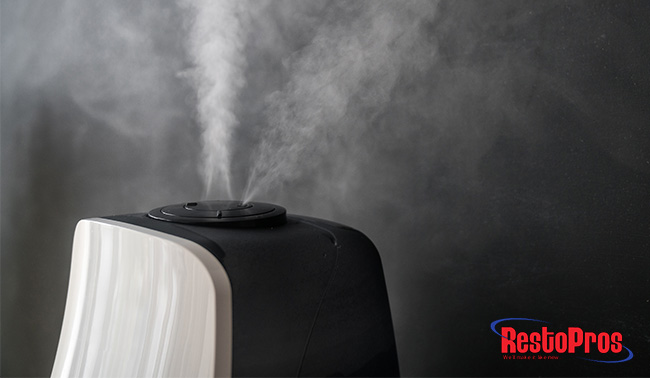
Humidifiers can provide a plethora of health benefits for your household. They can potentially alleviate dry skin, irritated eyes, allergies, sinus headaches, snoring and even prevent or alleviate serious medical illnesses! As great as all this sounds, there are some potential downsides to be aware of as well. Regular cleaning and maintenance of a humidifier is a must, as their very design can breed harmful mold if left unchecked. Here we’ll discuss how to avoid mold in your humidifier.
Basic Humidifier Maintenance
In general, it’s better to use distilled water to remove any potentially harmful elements from entering a humidifier. Hard water from the tap and all its lingering mineral deposits will be sprayed into the air for you to breath in!
Whatever water you opt for should be replaced daily to decrease the chances of developing mold or having mineral-deposit related issues down the road.
How to Clean a Humidifier
Draining and cleaning of the humidifier should be done once a month at the very least, and honestly two times a month is probably wise. Do this by disassembling the humidifier and soaking it in hot water mixed with vinegar, diluted chlorine bleach, or soap. (This has the added benefit of washing away any hard water deposits that may have built up inside the storage tank as well.)
Additionally, make sure and individually clean the belt mechanism that cycles the water, as its texture may allow unwanted bacteria to grow.
Depending on soaking time and your patience level, you can opt for anything from a sponge or old toothbrush to a scrub brush or wash cloth to remove residue. Once cleaned, rinse the parts and allow them to dry before reassembling.
Tea tree oil, hydrogen peroxide, and even specially designed
cleaning tablets can be used as well. If you go with chlorine, make sure it
doesn’t sit too long as it may cause damage to hoses and belts, depending on
the materials used in these parts.
How to Store a Humidifier
Typically, humidifiers aren’t used year-round. If this is the case for you, that means you’d likely pack it up and keep it somewhere out of sight, right? It’s nice to declutter and get it off the counter or night stand and into the closet, but is it stored properly?
A warm, dark, moist container is the perfect place for bacterial growth, and bringing out the humidifier the next time you need it might set you up for a hassle at best and trigger some unpleasant symptoms at worst.
Make sure to properly clean and dry it before stowing it away, so you don’t have a headache later on in the year.
How to Avoid Mold in Your Humidifier
So, if you’re thinking of getting a humidifier and checking on what commitments you’d be in for, or if you’re simply looking at how to properly maintain the one you’ve got, look no further!
Humidifiers are fantastic at helping keep your home comfortable and alleviate the discomforts of a dry environment, and with just a little care you can make sure they don’t cause any unwanted problems.
How to Get Rid of Mold in Your Home: Call RestoPros
Humidifiers aren’t the only source of mold in your home. If you believe you have mold, it’s important not to try to remediate it yourself. Mold remediation specialists are uniquely trained to remove mold without exacerbating any possible health risks. Call RestoPros to get rid of mold in your home today!
